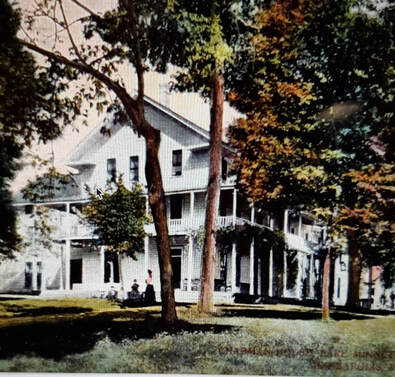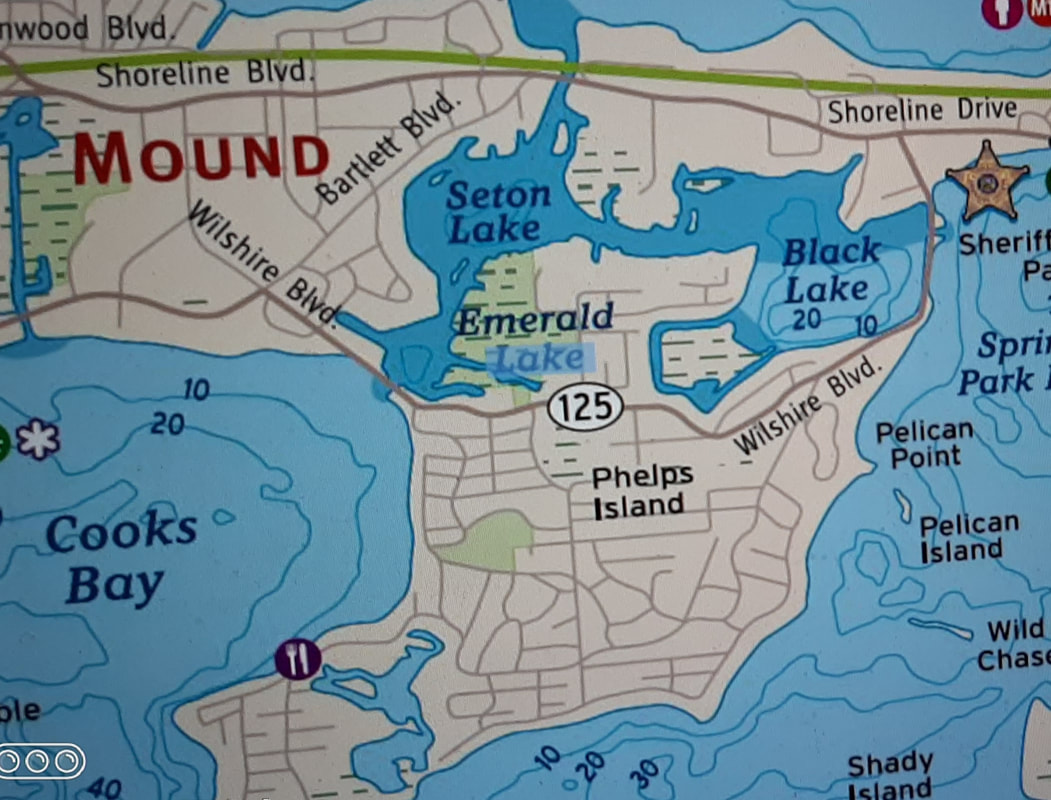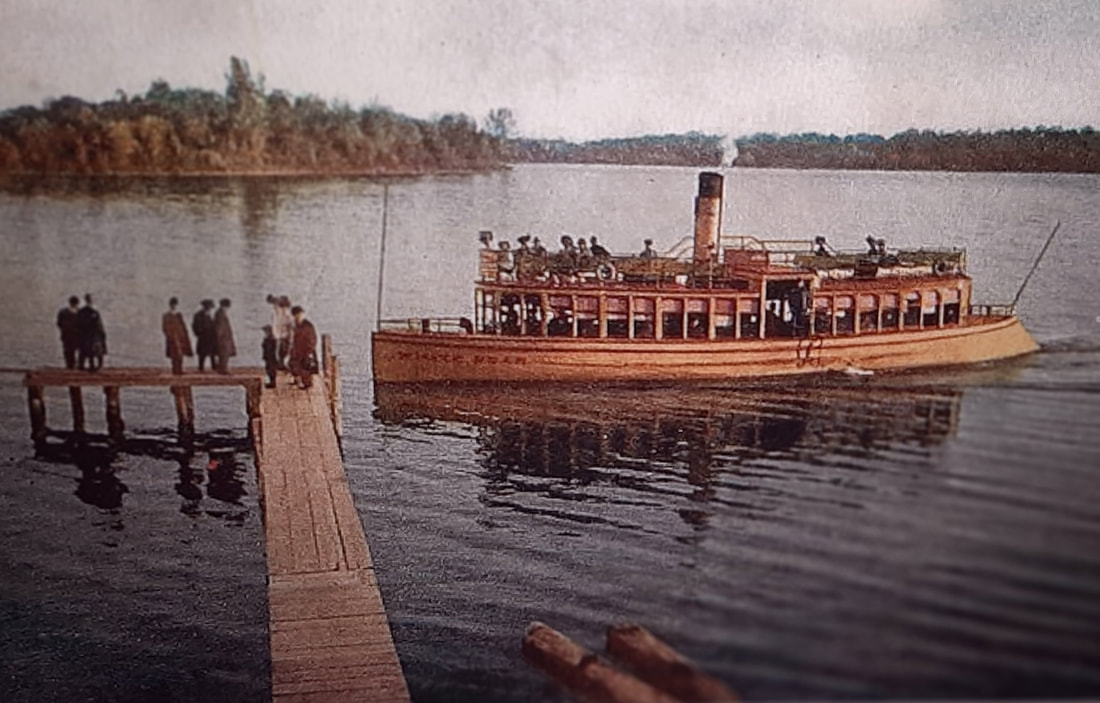Home of the Village Hall-Early Island History
The island that comprises a major portion of the city of Mound, is seen labeled as Phelps Island on many Lake Minnetonka maps. During the 1800s, the island was privately owned, bought from the government by William Noble in 1856. It was sold to Carrington Phelps in 1875.
Roughly 500-acres in size, the island was heavily treed, mostly with Maple, Ash, Oak, and Elm covering the rolling topography, and it was pocked with low swampy areas where giant cottonwoods stood as sentinels, and the sweet smell of peat bogs soothed the senses. Like the Noble family, Phelps wished to keep the island in its natural state, refusing to sell plots, although he did lease a few lakeshore lots to well-to-do friends and acquaintances.
| The Twin City Rapid Transit Company had extended their streetcar reach to Excelsior, and they constructed what they called Streetcar Boats. They, along with other boats, plied the waters of Minnetonka. With the reach extended to the lower lake, hotels, large and small, were being built on the various bays while boats of all manner were being used to ferry guests to destinations—or to enjoy the beauty of the area. | The weekends found Minneapolis residents flocking to the big lake to immerse themselves in the unspoiled nature of Lake Minnetonka and the surrounding beauty. By the early 1900s, Phelps Island had only a limited number of grandiose summer cottages, built by family friends on leased parcels along the shore of the heavy wooded land. |
 The Chapman House - Mound City
The Chapman House - Mound City July 1876, in Mound City, the Chapman House was opened for business as a "New and commodious hotel." Early advertisement: "As the upper lake is less frequented than the lower, the fish are naturally much more plentiful. Boats, fishing tackle and bait always on hand. Rates per day $2.00 — Per week $10.50 to $14."
JOHN A. PEARSON, PROPRIETOR.
JOHN A. PEARSON, PROPRIETOR.
In 1904, a tornado devastated the heavily forested private island leaving acre upon acre of downed trees to be cleared. The island's ownership was about to change hands once again.
Men were hired to clear the land. Among them was a recent emigrant from Norway named John Iversen. Iversen's arrival in America one year earlier would prove to be a catalyst. His entrepreneurial spirit would help define the future of this island in Lake Minnetonka and imbed his name into the island's history.
Men were hired to clear the land. Among them was a recent emigrant from Norway named John Iversen. Iversen's arrival in America one year earlier would prove to be a catalyst. His entrepreneurial spirit would help define the future of this island in Lake Minnetonka and imbed his name into the island's history.
Coming Next: Tornado of 1904
We intend to bring this rare and wonderful treasure back into prominence as the center of activities for Mound residents living on the island. Our goal of earning inclusion into the National Register of Historic Places is well on its way to completion. This miracle of early construction methods, with 21st-century upgrades, will catapult her once again into the heart of the community.
Explore this site, poke around to discover the various pages and become a donor for the future of the Village Hall. https://www.islandparkvillagehall-mn.org/support.html http://www.dale-swanson.com
Explore this site, poke around to discover the various pages and become a donor for the future of the Village Hall. https://www.islandparkvillagehall-mn.org/support.html http://www.dale-swanson.com


 RSS Feed
RSS Feed
